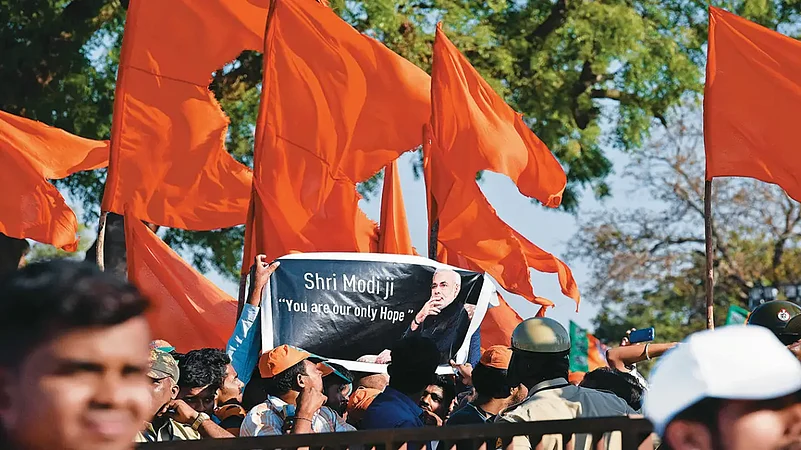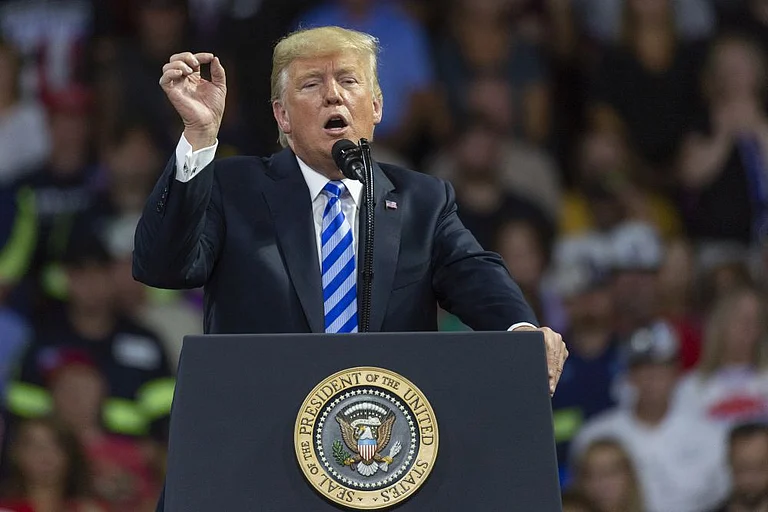Victory to the Daughter of Mother India
Victory to Mother Karnataka
(Jaya Bharata Jananiya Tanu Jaate; Jayahe Karnataka Maate)
These are the opening lines of the Karnataka state anthem. The anthem, written originally as a song by towering Kannada litterateur Kuvempu, pays obeisance to Mother India before extolling the virtues of Kannada land. It is suggestive of a national imagination of politics that Karnataka has always cherished, while politics in other states in the South acquired a strong regional manifestation.
As regional parties founded on linguistic and caste identities have captured power elsewhere, following the end of the Congress party dominance, Karnataka has always stayed with national political parties. This is certainly one of the explanations for the Bharatiya Janata Party (BJP) making rapid inroads into the state, although its efforts to find a toehold elsewhere in the South have come a cropper. When the Congress lost power first in 1983 and then more decisively in 1985, the state came under the rule of Janata Party (later Janata Dal). When the Janata Dal began to disintegrate towards the end of 1990s, the BJP gradually moved to the centre stage to form government twice—first in 2008, then in 2019.
The presence of a regional party would have possibly scripted the political history of Karnataka differently by making it difficult for the BJP to make Karnataka its southern gateway. So, the question why the BJP could succeed only in Karnataka first begs an answer to the question—what explains the absence of strong regional political sentiments in Karnataka that allowed the BJP to flourish? The answer can be found in the unique political geography and the social diversity of the state. Karnataka that came into being after the reorganisation of states in 1956 is an amalgamation of at least four distinct regions—Old Mysore region, Bombay-Karnataka region, Hyderabad Karnataka region and Old Madras Presidency region or coastal Karnataka. Although Kannada is the common language, the affinity to the language is not uniform across these regions. Kannada is not the mother tongue of many people in coastal Karnataka and in the regions in the north-eastern and south-western parts of the state. Political mobilisation around a common language seen in most of the other southern states has, therefore, been difficult in Karnataka. At the same time, political mobilisation around caste lines has not been easy either, as two dominant castes, the Lingayats and the Vokkaligas, have found it more expedient to join hands with one of the established national political parties, instead of floating a new party at the risk of getting pipped at the post in the process by the rival caste group. The national parties, in turn, have always kept the two dominant caste groups adequately rewarded to thwart any possibilities of either of them forming an independent regional party. Backward castes and Dalits are too dispersed both culturally and geographically for any kind of caste-based political mobilisation.
The socio-cultural diversity also poses a different challenge to the BJP in making its ideology of Hindutva and cultural nationalism find widespread acceptance. The larger national political imagination that Karnataka collectively treasured as exemplified in the state anthem is not the same as the religious nationalism that operates at the core of the BJP’s ideology for most people.
In line with efforts at the national level to spread its ideology of religious nationalism, the state unit of the BJP raked up a series of emotive local issues to establish itself more firmly on Karnataka soil. Be it the controversy over hoisting the national flag on Idgah Maidan in Hubballi, claiming the ownership for the Hindus of a syncretic place of worship at Bababudangiri in Chikmagalur, villainising Tipu Sultan as a bigot or the most recent controversy of Muslim girls wearing hijab in schools, the BJP has been continuously inventing communally sensitive issues, with the objective of achieving a wider acceptance for its ideology in the state. Its efforts so far seem to have succeeded largely in coastal Karnataka and parts of Bombay-Karnataka, which have had a longer history of right-wing politics. In the rest of the state, the divergence between the faster electoral acceptance of the party and the relatively slower acceptance of its ideology continues.
The BJP has also been helped by the political rivalry between the Lingayats and the Vokkaligas. The Lingayats fell out with the Congress after one of its tall leaders Veerendra Patil was unceremoniously removed from the post of chief minister in 1990. Since then, the Lingayats started shifting their political allegiance first towards the Janata Dal and then the BJP. As the Janata Dal kept disintegrating during the 1990s, more Lingayat leaders joined the BJP to help it emerge as the single largest party in 2004 elections and form a short-lived coalition government with Janata Dal-Secular (JD-S) in 2006. The Lingayat support to the BJP got consolidated after when the JD-S withdrew from the coalition depriving another Lingayat leader B.S. Yediyurappa of the opportunity to take over as chief minister under the original coalition agreement. The Lingayats took this as a betrayal of its leader by the rival Vokkaliga community that constitutes the main support base of the JD-S.
Two important points need to be noted in the Lingayat support to the BJP in Karnataka. First, the Lingayats did not shift their allegiance immediately to the saffron party after their relationship with the Congress soured. They did so only after the centrist alternative of the undivided Janata Dal ceased for them. Second, the larger sections of Lingayats have been supporting the BJP because of their loyalty to Yediyurappa rather than to the BJP. The BJP’s efforts to ensure the Lingayat support sans Yediyurappa have not yielded results so far.
The BJP also owes a great deal to the Congress and the JD-S in alienating the powerful Lingayat community, making repeated blunders, forcing it to rally around the BJP. In the meantime, the BJP has also deftly managed to secure the support of a section of Dalits, Scheduled Tribes and several backward castes by offering leaders from these sections ticket to contest elections and positions of power, both in the state and in the Union governments. Though the social base of the party is widespread, it remains volatile in the absence of a larger acceptance of its ideology.
The image of Prime Minister Narendra Modi might have helped it sweep the 2019 Lok Sabha elections, but despite the hectic campaign by both Modi and Home Minister Amit Shah, the party fell short of a simple majority in the 2018 assembly elections. It won only 104 of the 224 seats, six less than it won in 2008 much before Modi and Shah appeared on the scene.
All these facts show that while the BJP has been helped by a series of accidental factors in its successful electoral journey in Karnataka, the party is far from fully capturing the state to feel politically secure.
(This appeared in the print edition as "The Halfway Mark")
(Views expressed are personal)
A. Narayana teaches Public Policy and Governance at Azim Premji University, Bengaluru





















